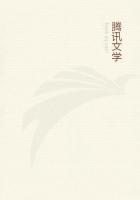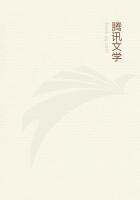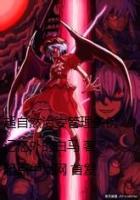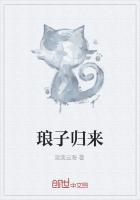It is a common belief that the more ancient a form is, by so much the more it tends to connect by some of its characters groups now widely separated from each other. This remark no doubt must be restricted to those groups which have undergone much change in the course of geological ages; and it would be difficult to prove the truth of the proposition, for every now and then even a living animal, as the Lepidosiren, is discovered having affinities directed towards very distinct groups. Yet if we compare the older Reptiles and Batrachians, the older Fish, the older Cephalopods, and the eocene Mammals, with the more recent members of the same classes, we must admit that there is some truth in the remark.
Let us see how far these several facts and inferences accord with the theory of descent with modification. As the subject is somewhat complex, I must request the reader to turn to the diagram in the fourth chapter.
We may suppose that the numbered letters represent genera, and the dotted lines diverging from them the species in each genus. The diagram is much too ******, too few genera and too few species being given, but this is unimportant for us. The horizontal lines may represent successive geological formations, and all the forms beneath the uppermost line may be considered as extinct. The three existing genera, a 14, q 14, p 14, will form a small family; b 14 and f 14 a closely allied family or sub-family; and o 14, e 14, m 14, a third family.
These three families, together with the many extinct genera on the several lines of descent diverging from the parent-form A, will form an order;for all will have inherited something in common from their ancient and common progenitor. On the principle of the continued tendency to divergence of character, which was formerly illustrated by this diagram, the more recent any form is, the more it will generally differ from its ancient progenitor. Hence we can understand the rule that the most ancient fossils differ most from existing forms. We must not, however, assume that divergence of character is a necessary contingency; it depends solely on the descendants from a species being thus enabled to seize on many and different places in the economy of nature. Therefore it is quite possible, as we have seen in the case of some Silurian forms, that a species might go on being slightly modified in relation to its slightly altered conditions of life, and yet retain throughout a vast period the same general characteristics. This is represented in the diagram by the letter F 14.
All the many forms, extinct and recent, descended from A, make, as before remarked, one order; and this order, from the continued effects of extinction and divergence of character, has become divided into several sub-families and families, some of which are supposed to have perished at different periods, and some to have endured to the present day.
By looking at the diagram we can see that if many of the extinct forms, supposed to be embedded in the successive formations, were discovered at several points low down in the series, the three existing families on the uppermost line would be rendered less distinct from each other. If, for instance, the genera a 1, a 5, a 10, m 3, m 6, m 9 were disinterred, these three families would be so closely linked together that they probably would have to be united into one great family, in nearly the same manner as has occurred with ruminants and pachyderms.
Yet he who objected to call the extinct genera, which thus linked the living genera of three families together, intermediate in character, would be justified, as they are intermediate, not directly, but only by a long and circuitous course through many widely different forms. If many extinct forms were to be discovered above one of the middle horizontal lines or geological formations for instance, above No. VI. but none from beneath this line, then only the two families on the left hand (namely, a 14, &c., and b 14, &c.) would have to be united into one family;and the two other families (namely, a 14 to f 14 now including five genera, and o 14 to m 14) would yet remain distinct. These two families, however, would be less distinct from each other than they were before the discovery of the fossils. If, for instance, we suppose the existing genera of the two families to differ from each other by a dozen characters, in this case the genera, at the early period marked VI., would differ by a lesser number of characters; for at this early stage of descent they have not diverged in character from the common progenitor of the order, nearly so much as they subsequently diverged. Thus it comes that ancient and extinct genera are often in some slight degree intermediate in character between their modified descendants, or between their collateral relations.
In nature the case will be far more complicated than is represented in the diagram; for the groups will have been more numerous, they will have endured for extremely unequal lengths of time, and will have been modified in various degrees. As we possess only the last volume of the geological record, and that in a very broken condition, we have no right to expect, except in very rare cases, to fill up wide intervals in the natural system, and thus unite distinct families or orders. All that we have a right to expect, is that those groups, which have within known geological periods undergone much modification, should in the older formations make some slight approach to each other; so that the older members should differ less from each other in some of their characters than do the existing members of the same groups; and this by the concurrent evidence of our best palaeontologists seems frequently to be the case.
Thus, on the theory of descent with modification, the main facts with respect to the mutual affinities of the extinct forms of life to each other and to living forms, seem to me explained in a satisfactory manner. And they are wholly inexplicable on any other view.

